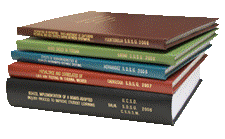Libraries, University of Nebraska-Lincoln

Archival Master’s Theses from the University of Nebraska-Lincoln
Date of this Version
7-1965
Document Type
Thesis
Citation
Thesis (M.S.)—University of Nebraska—Lincoln, 1965. Department of Animal Science.
Abstract
Consumer demand for leaner beef has increased the need for production of beef carcasses with high yields of lean, tender beef with desirable eating qualities. Efforts are being made to produce more desirable carcasses through more efficient methods of selection, feeding and management. A re-examination of the value of castration is prompted because evidence indicates that bulls gain faster and more efficiently than steers. The purpose of this study is to evaluate the effect of castration on growth and carcass traits. It is necessary to determine procedures for feeding and management of bulls as compared to steers to maximize favorable expression of growth and carcass traits of bulls.
One hundred male Angus calves, born in 1962 and 1963, were individually fed a ration containing 68.4 percent TDN from weaning to slaughter. Eleven sires were represented. The cattle were slaughtered in two groups in each year, approximately 211 and 256 days after weaning, respectively. Fifty-one of the male calves were castrated at weaning and fed as steers; the remaining 49 calves were fed as bulls. The traits measured were lean color, lean texture, marbling, carcass grade, tenderness (Warner-Bratzler Shear Test), pounds boneless, closely trimmed retail cuts from the chuck, rib, loin, round, and total retail product.
Advisors: Charles H. Adams and Vincent H. Arthaud


Comments
Copyright 1965, the author. Used by permission.